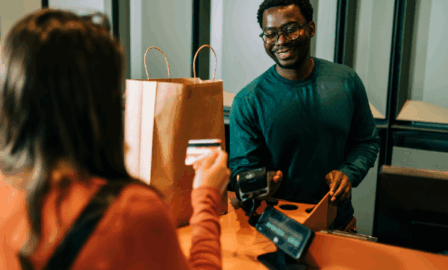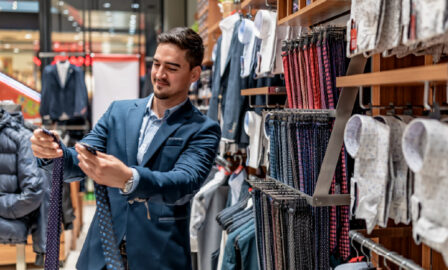What is Retailer Bracketing, and How is it Impacting Retailers?
Due to the acceleration of eCommerce and direct-to-consumer (DTC) retail channels, online shopping is considered a norm by most customers given the convenience, product variety, and flexibility. With this in mind, we’re beginning to see a new trend in customers’ online shopping habits: retailer bracketing. While purchasing and returning items is a standard part of the retail experience, “bracketing” is a large factor in the evolving retailer landscape.
What is Retailer Bracketing?
Retailer bracketing is where customers buy several items (such as the same shirt in different colors, or the same shoe in a few sizes) with the intention of keeping a single item and returning the rest. Underlining the prevalence of this phenomenon, a recent study showed that 62% of consumers have “bracketed” their online purchases in 2022 (up 5% from the previous year). While this trend reflects a shift in customer’s online shopping habits, it creates challenges for retailers who must facilitate, process, and restock inventory.
A recent survey of 500 retailers suggests that 73% of them saw returns as a “moderate-to-severe risk” to their business. This is because the average online return costs retailers 21% of the original sale price. Key drivers that make restocking or reselling unattractive include labor costs to process returns and reverse logistics between the return and distribution centers. Alternatively, some retailers offer returnless refunds, sell items to third-party resellers at a loss, or completely discard the merchandise.
The value of returns in 2022 was placed at $279B worth of merchandise by Insider Intelligence. This financial strain is weighed against maintaining a seamless customer experience, in which customer have come to expect free returns. As retailers assess their return policies, we have outlined three recommendations to help retailers provide outstanding customer service while mitigating operational and cost impacts.
Return Recommendations for Retailers
1. Incentivize In-Store or In-Person Returns through Third-Party Partners
A common option to reduce return costs is to provide customers with centralized drop-off locations. This allows for the bulk shipment of returns, rather than the dozens of boxes in which the products were originally shipped. For example, Walmart offers a drop-off option through FedEx as well as at home pickup for Walmart+ members. Amazon similarly offers drop off options at Whole Foods and UPS.
To further offset costs and to reduce complexity for both customers and sellers, retailers can consider using third-party services who specialize in streamlining the return process. Vendors like Happy Returns by PayPal and their partner Loop connect online retailers with their network of 5,000+ affiliate brick-and-mortar stores, to facilitate online returns easily, sustainably, and economically. Allbirds began leveraging Loop and Happy Returns in 2022 to offer customers more convenient returns to nearby affiliate stores, like Ulta Beauty, in cases where they can’t return to an Allbirds store directly. Retailers can use logistics partners like Loop and Happy Returns to offer a seamless and label-free returns process to customers while optimizing a more cost-effective reverse logistics process.
2. Reframe the Cost-Benefit of Returns to Customers
To disincentivize frequent online returns, several retailers have chosen to amend their return policies, instituting small fees to cover the cost of returns. REI, PacSun, and Zara have imposed policies that deduct a return fee to cover shipping costs from the refund amount. It should be noted though that these brands have a brick-and-mortar presence and still allow for free in– person returns to their stores. This option may not be the right choice for every brand, but it could be one worth considering for those with slim margins to protect their bottom line while minimally inconveniencing customer.
Wherever possible, however, retailers should remain customer-first in their policies and treat the return experience with understanding and flexibility. This will reinforce customer loyalty and build lifetime value, while still allowing retailers to manage the volume and cost of returns.
At the core of delivering outstanding customer service is an innate understanding of their values. As younger shoppers gain buying power, their values in supporting sustainability could be channeled to shape return policies. As we’ve discussed, online returns create cost impacts for retailers but also environmental impacts through the return’s carbon footprint. This fact could help to discourage bracketing and highlight that the convenience of free returns can carry a cost greater than a return fee. The next logical step we can expect from retailers are synergies in positioning returned items as part of secondhand retail programs like Patagonia’s “Worn Wear” and Arcteryx’s “ReGear” programs. Incentivizing customers to turn a return into an exchange is a win-win for retailers, and customers and can ultimately reduce financial and environmental impacts.
3. Curate a Virtual ‘Fitting Room’ Experience to Help Customers Make the Right Selection, the First Time
The best outcome that a retailer – and a customer – can expect from a shopping experience is loving their new purchase and not needing to return it in the first place. While this is easier said than done, we see retailers employing virtual try-on technologies and more robust product descriptions to help customers make informed purchasing decisions.
From a technology standpoint, Warby Parker has allowed prospective customers to virtually try on their glasses using augmented reality (AR) through their mobile app. Estée Lauder and other beauty brands similarly leverage Snapchat AR virtual try-on options to test products at home before purchasing. Investing in technology to enhance the website, app, and social experiences can improve connection with customers and aid in their decision-making prior to making a purchase. Winning retailers will invest in technologies that mimic a fitting room experience for customers.
When looking at product content opportunities, we see retailers leveraging 360-product reviews, sizing guides, featured customer reviews, and descriptive product overviews to equip customers with enough information to choose their products as if they were trying the product on in stores. Many retailers, including Nordstrom, leverage their customer reviews, which include various descriptors like if a product runs small or large and recommend how to style items into outfits to great effect, in order to best equip shoppers with the information they need to make the right selection.
Navigating Retailer Bracketing: An Evolving Retail Landscape
Online shopping has allowed retailers to reach new customers and has made the retail experience easier than ever. Today’s retail leaders should be empowered with the tools and strategies to continuously adapt to shifting customer demands and the evolving retail landscape, including the evolving purchasing habits like bracketing. For further information or help tackling your own retail challenges, contact our retail experts today.
Subscribe to Clarkston's Insights
Contributions from Jacob Elson



